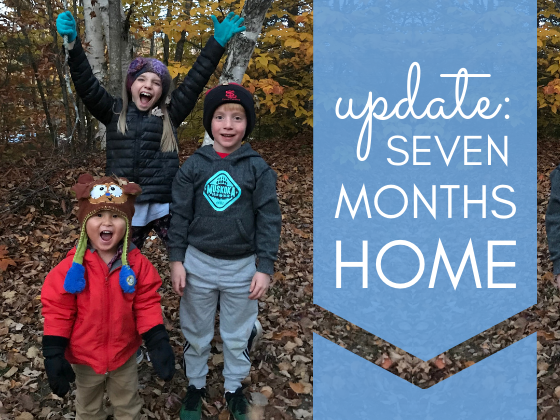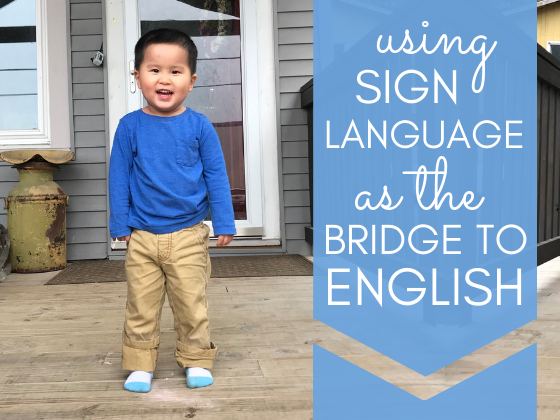WHY CHINA? | OUR DECISION TO ADOPT INTERNATIONALLY
 |
| Photo by Melissa on Unsplash |
A lot of people have asked us why we decided to adopt from China.
It’s a good question!
It would be fun tell you that we had an incredible story with a string of crazy coincidences that lead us to choose China but for us, adopting from China was more of a practical choice.
In the decision to adopt, we definitely felt God’s call to do so but that was where it ended. We didn’t feel as though the Lord was calling us to adopt a child from a specific place or of a specific age or a specific gender or with a specific special need. That being the case, our next-step decisions were made from a practical standpoint based on our family's circumstances.
Please don’t get me wrong - if God had given us a specific place, age, need, etc., we would have answered His call with an absolute 'yes'! And we’ll do the same if that call comes while we’re in the middle of this process. But for us, He didn’t specify those details - only that we should trust Him and adopt. I think He does that with a lot of areas of our lives: “Hey, Brooke, I want you to love me and to trust Me... that is all.” The details aren’t always given, sometimes they’re for us to decide; wisely and with faith. And we believe that that is the case for us in adoption.
At the beginning of our adoption journey, we learned that there are essentially three ways to adopt:
- domestic infant adoption (adopting a newborn in the U.S.)
- foster to adopt (fostering through the U.S. foster care system with the intent to eventually adopt the child you’re fostering)
- international adoption (adopting from another country)
What we learned about adopting through the foster care system was similar - a long timeline and that we could have many children come in and out of our home before actually having the opportunity to permanently adopt. Again, I’m not saying that in a negative light, it is just simply the reality of what we learned.
I mentioned in my last post that we’ve had multiple people live with us over the last four years. Watching our children grow to love them and then have to say goodbye (even if it’s for good reasons) has been hard. Alongside that, with so many high school students coming in and out of our home on a regular basis, Brad and I felt like the adoption area of our life (even the process of it) needed to have a sense of permanency. I realize that some who have already adopted might laugh at that because, really, adoption is the Pandora’s box of unknowns but those were some of our honest thoughts that lead us to decide to adopt internationally.
So why did we eventually choose China?
China, too, was a decision we made based on what we believed would be the best fit for our family.
Right away, Brad and I learned that every country we could adoption from was different. Different qualifications, different costs, different wait times, different travel times, different histories, different post-adoption circumstances, different everything! So we looked at each layer of adoption for each country and weighed what each would look like for our family.
Here are some of the thoughts we considered:
Qualification standards: Each country has different qualifications that adoptive families have to meet before they even apply. You may need to meet a minimum net worth amount. You may need to meet certain physical health standards. You may need to have been married for a minimum amount of time. Etc. That being said, there were some countries that Brad and I couldn’t adopt from based on their standards. We removed those countries from our list of options and looked at the next layer.
Cost: The cost for adoption is different depending on where you adopt. From what we looked at, I’d say almost all the costs for each country fell somewhere between $25,000 and $45,000. Brad and I weighed how much we had in savings and how much we thought we could fundraise and removed the countries that were out of our price range from that list.
Wait Times: The third layer we looked at was how long (on average) the process to adopt would take for each country. These timelines ranged anywhere from 18 months to 6 years. We weighed these options by considering how old Abi and Andrew are now, what age range we felt comfortable adopting, how old the child might be when they come home, and how old Abi and Andrew might be when the child comes home. Knowing that most adoptions don’t go as planned and can take longer than expected, we chose to consider countries with shorter wait times, hoping that Abi and Andrew will be closer in age to the child we’re adopting when we bring them home.
Travel Times: The next layer we looked at was each countries' required travel times. This was probably the most surprising layer for us. We learned that some countries require two, three or even four visits to their country before you can bring your child home. Some of those visits can be anywhere from 4-6 weeks long! And some countries require a certain amount of time to have passed in between each visit. For example, one country required a bonding trip to connect with your child for 4 weeks and then a year wait in-between before being able to bring that child home. We thought a lot about Brad’s job requirements as well as how often and how long we would need to be away from our biological children and used that information to narrow down our list.
History: After looking at the travel requirements, Brad and I wanted to consider the history of that country’s stability in regards to adoption. There are certain countries that have, for one reason or another, opened their doors to adoption and closed them multiple times. If you are in the process of adopting from a country that closes their doors to adoption in the middle of your adoption process, your choice is to either wait for them to open their doors again or to start over with another country. If you choose to wait, there will be additional fees you will need to pay to keep your paperwork updated while you wait for the country to reopen (which could be a very, very long time). If you choose to move to another country, you will be starting over financially and all the fees already paid to the now-closed country will be gone. Going back to the sense of permanency that I mentioned earlier, we decided that choosing a country that has a history of a good relationship with the United States in regards to adoption would be the best fit for our family.
Post-Adoption Circumstances: Lastly, we took some time to consider what it would look like to actually bring home a child from another country and have them be a part of our family and the community where we live. We considered the resources our community has for adoptive families, the medical needs our community could support, the diversity of our community and how we felt our future child would feel living where we lived. We looked at the culture of each country and considered what it might be like for a child to adjust to what would be their new American culture.
A child who needs a home is a child who needs a home regardless of their race, age, sex, or special needs. So with so many children, from so many places, with so many needs, how do you decide?
Adoption isn’t simple and it’s very emotional. It’s about more than simply giving a child who doesn’t have a home a place to live. It’s about giving that child a family, a community, friendships, opportunities, genuine love, an actual life - not just the means to stay alive. I know that seems obvious but, in reality, that has SO many layers and when Brad and I actually had to think about how to do that, we’ve had to be very practical - not emotional - because our emotions can occasionally lead us astray.
Sometimes, I think we wait for our emotions to tell us what do to. We trust them - because there is a feeling associated with them. There's nothing wrong with emotions and they certainly aren't always misleading. But I want to encourage those that are considering adoption that you don't have to have a crazy story, prophetic dream, or emotional pull to adopt. I say that because someone reading this may feel the call to adopt but hasn't responded yet because the absence of emotion makes them doubt. I get you. And I want you to know that it's okay to make decisions based on the faith and wisdom that the Lord has given you. The emotions will come and the emotions will go. But the foundation of faith and wisdom that you build outside of emotion will always stand. And you want to be standing on that.
For Brad and I, as with all our decisions, we do our best to listen to the Lord and make wise choices. After weighing all the above options, we decided to adopt from China - specifically from their Waiting Child List that includes children with a wide range of special needs. We met China's qualification requirements, the cost would be somewhere around $37,000, the travel time is one two-week trip to China to bring the child home, they have a 20+ year history of good adoption relations with the U.S., and there are many needs on the special needs list that our town has the resources to provide for.
For the Varner's, China it is! As we have continued deeper into this process, the emotion of adopting from China has grown from a practical decision to anxious excitement. I can't wait to see who the Lord has for us there and I can't wait to go to their country, to physically get to see their culture and to bring it home with them.
But even more than that - I can't wait to take one more name off China's Waiting Child List 💛


Comments
Post a Comment